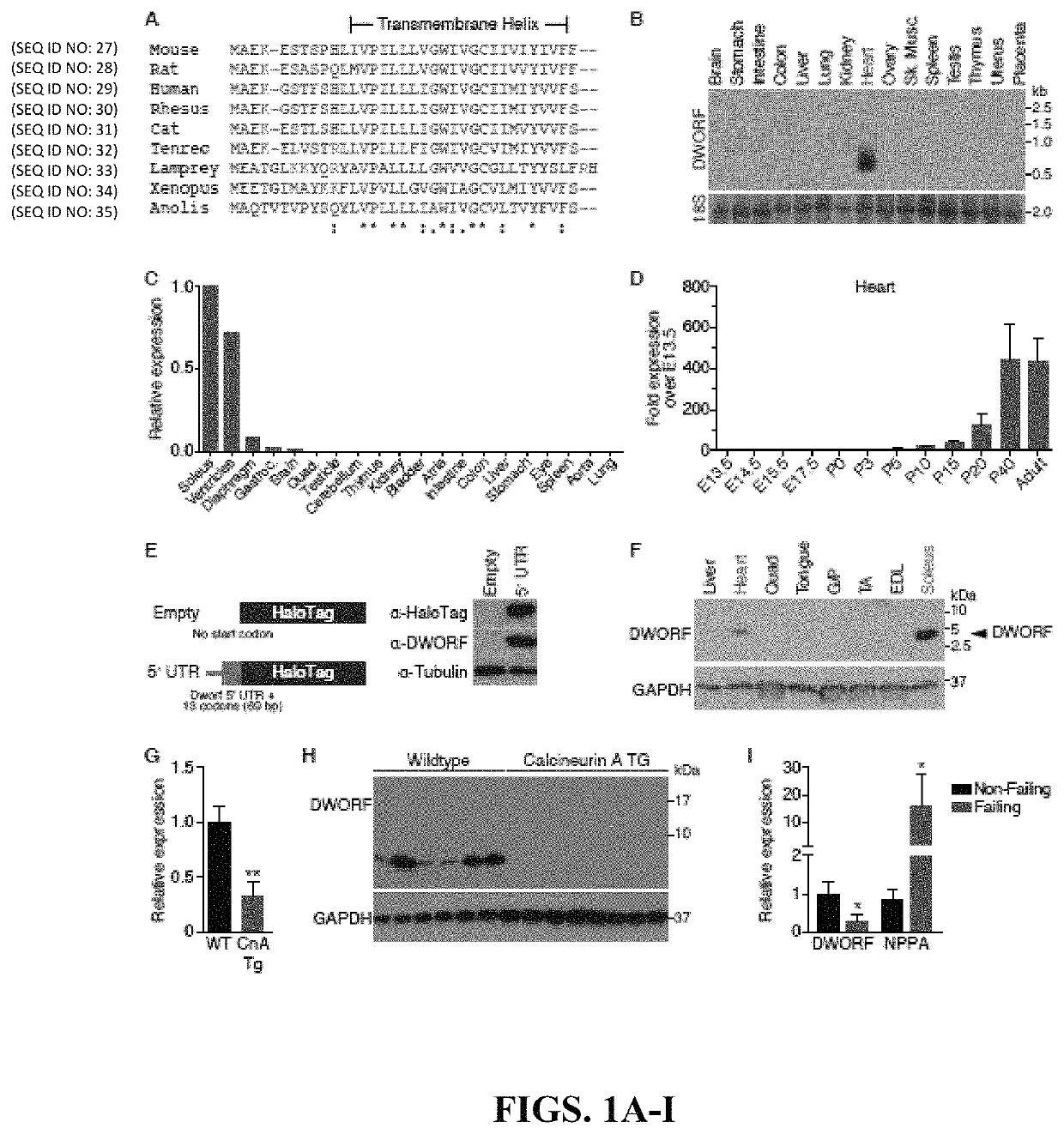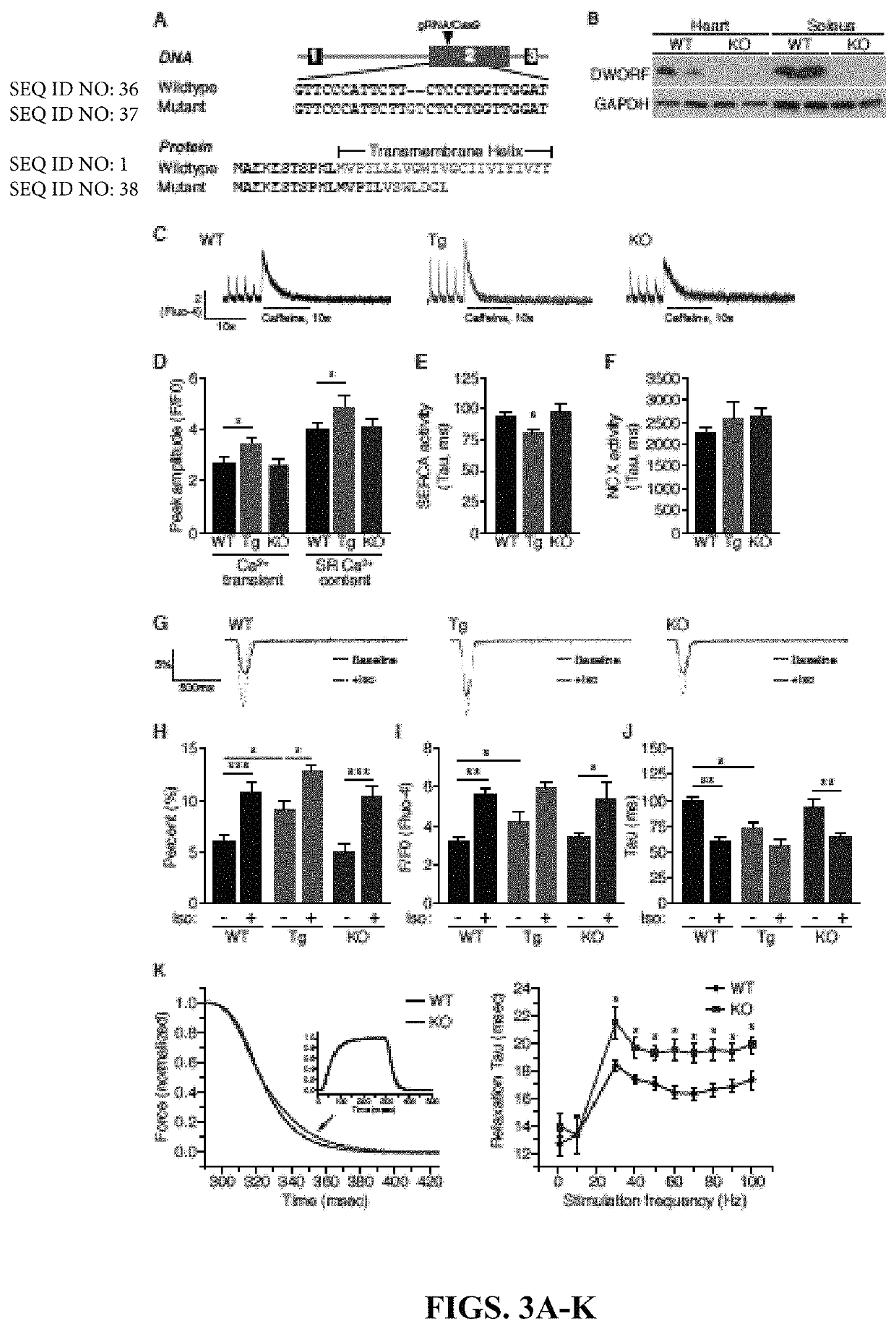Use of a small native peptide activator of SERCA pump for treatment of heart failure and other disorders characterized by cytosolic calcium overload
a technology of cytosolic calcium overload and activator, which is applied in the field of molecular biology, cell physiology and medicine, can solve the problems of difficult direct overexpression of the serca pump, no treatment currently available, and no treatment that effectively enhances this pathway. , to achieve the effect of promoting the activity of the serca calcium pump
- Summary
- Abstract
- Description
- Claims
- Application Information
AI Technical Summary
Benefits of technology
Problems solved by technology
Method used
Image
Examples
example 1
and Methods
Identification of Conserved Small Open Reading Frames.
Total RNA was extracted from adult mouse heart tissue using Trizol (Invitrogen). An RNA sequencing library was prepared using the TruSeq RNA Library Prep Kit (Illumina) according to the manufacturer's protocol. Reads were mapped to the UCSC mm9 reference genome (Kent et al., 2002) using TopHat (Trapnell et al., 2009). Final transcripts were assembled using Cufflinks and consolidated with the mm9 reference annotations (Trapnell et al., 2012). Novel transcripts (i.e., those not existing in the reference annotation) were extracted and combined with transcripts annotated as long non-coding RNA in the UCSC database. Sequence alignments from fourteen mammalian species (mouse, rabbit, rat, human, chimpanzee, rhesus monkey, shrew, dog, cat, horse, cow, armadillo, elephant, and tenrec) were extracted using the “Stitch Gene blocks” tool in Galaxy (Blankenberg et al., 2011; Giardine et al., 2005; Blankenberg et al., 2010 and Goec...
example 2
Recently, the inventors discovered MLN as a small open reading frame (ORF) hidden in a transcript annotated as a long non-coding RNA (lncRNA) (Anderson et al., 2015). They hypothesized that many transcripts currently annotated as lncRNAs may encode small proteins that have evaded gene annotation attempts and recent proteomic analyses support this notion (Slavoff et al., 2013; Frith et al., 2006 and Nelson et al., 2014). To identify potential muscle-specific micropeptides, the inventors searched bioinformatically using PhyloCSF for putative ORFs within mouse transcripts annotated as lncRNAs (Lin et al., 2011). Among these RNAs, they discovered a previously unrecognized muscle-specific RNA containing a potential ORF of 34 codons, which the inventors called Dwarf Open Reading Frame (DWORF) (FIG. 1A and FIG. 5). The DWORF RNA transcript is annotated as NONCODE lncRNA gene NONMMUG026737 (Xie et al., 2014) in mice and lncRNA gene LOC100507537 in the UCSC human genome (FIG. 6A). With only ...
PUM
| Property | Measurement | Unit |
|---|---|---|
| frequency | aaaaa | aaaaa |
| delay time | aaaaa | aaaaa |
| delay time | aaaaa | aaaaa |
Abstract
Description
Claims
Application Information
 Login to View More
Login to View More - R&D
- Intellectual Property
- Life Sciences
- Materials
- Tech Scout
- Unparalleled Data Quality
- Higher Quality Content
- 60% Fewer Hallucinations
Browse by: Latest US Patents, China's latest patents, Technical Efficacy Thesaurus, Application Domain, Technology Topic, Popular Technical Reports.
© 2025 PatSnap. All rights reserved.Legal|Privacy policy|Modern Slavery Act Transparency Statement|Sitemap|About US| Contact US: help@patsnap.com



